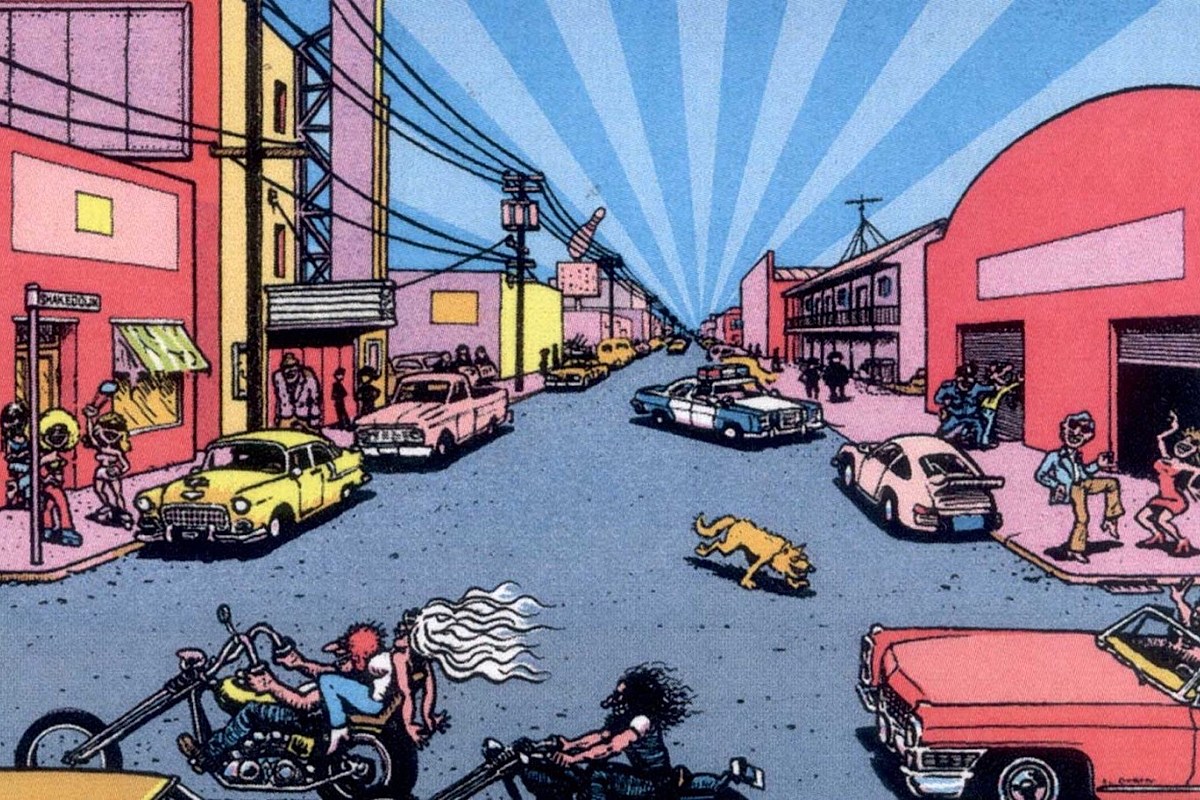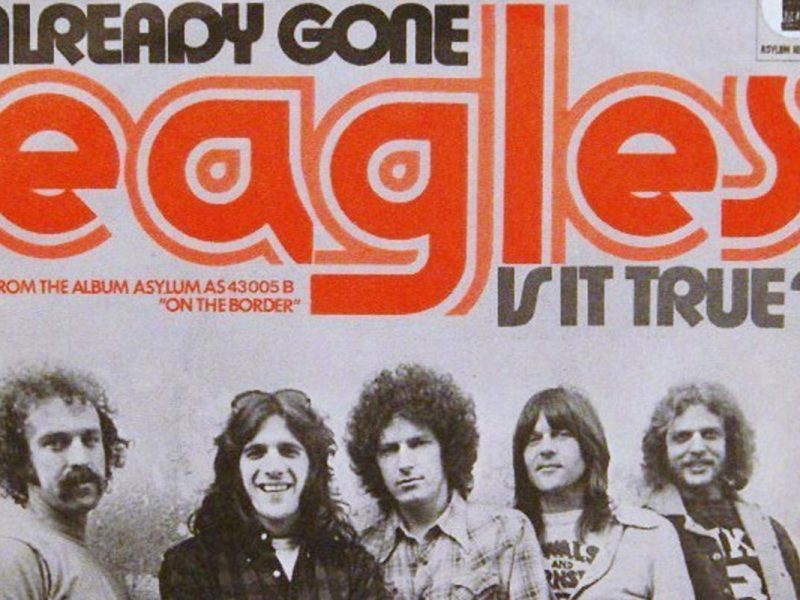The Grateful Dead’s turn toward more commercial sounds – derisively dubbed “disco Dead” when Shakedown Street arrived on Nov. 15, 1978 – didn’t exactly come out of nowhere.
They’d started in that direction with “Franklin’s Tower” and “The Music Never Stopped” from 1975’s Blues for Allah, and continued along the same lines on 1977’s Terrapin Station, where they covered a Motown song. Credit, or blame, went to that period’s new association with Keith Olsen, who brought a polished approach to the proceedings after working with Fleetwood Mac.
Suddenly, the Washington Post was talking about – gasp! – hit singles. They’d even been spotted – gasp, again! – on TV, even though Jerry Garcia had once described it as “just the wrong form for the Grateful Dead. I mean, it’s about enough time for us to tune up. Also, television is kinda of reductive. The band playing on television seems reduced. It doesn’t come through.”
READ MORE: Jerry Garcia’s Final Grateful Dead Concert
Yet, there they were, appearing on Saturday Night Live the week Shakedown Street was released, playing two songs from the new album and the classic “Casey Jones.” It was all a long, strange distance from the lysergic haze of the ’60s. But was Shakedown Street really “disco Dead”?
Beyond the radio-ready title track, the answer is: not really. Elsewhere, they were certainly more sophisticated but often no less rootsy. That again was not entirely unexpected, since the Grateful Dead had now been paired with producer Lowell George of Little Feat. “We chose Lowell George because we wanted someone who understood band mechanics,” Garcia said in Garcia: An American Life.
Listen to the Grateful Dead’s ‘Good Lovin’’
Little Feat’s Lowell George Basically Joins the Band
George had overseen his own group’s transformation from an oddball post-Frank Zappa hybrid group to subtler R&B-flecked roots rockers. He had a similar musical impact on Shakedown Street, giving the LP an underrated complexity.
In some cases, George worked as a de facto collaborator – up to, and including, joining them in their illicit drugs of choice – as sessions continued in a far more organic space. The Grateful Dead rented a warehouse in San Rafael, Calif., to work through song ideas. Garcia had recently rehearsed a solo project there, and liked it so much that the band ultimately decided to install studio equipment to capture the room’s natural ambience.
“Lowell was really like a member of the band more,” Bill Kreutzmann says in Willin’: The Story of Little Feat. “If we were working on a song and he didn’t feel it was going right, he’d just grab a guitar and come into the studio and show us how he felt it. That was one of the ways he’d communicate, and it worked great. I had a tremendous amount of respect for him.”
The title track shared the same silky modernity as the Rolling Stones’ contemporaneous “Miss You.” Mickey Hart’s interest in the Bee Gees actually led to its disco-fied arrangement, but he also earned co-writing credits on three other tracks – including “Fire on the Mountain,” which boasted a hip reggae lilt.
Listen to the Grateful Dead’s ‘Shakedown Street’
Drug Use Becomes an Issue During the Sessions
They opened with a rollicking Bob Weir-sung cover of the Rascals’ “Good Lovin’,” returning to a song that dated back to the Dead’s earliest days with Ron “Pigpen” McKernan. Elsewhere, Hart and Kreutzmann contributed another percussion-based instrumental called “Serengetti.” Donna Godchaux’s Muscle Shoals chops came in handy on “From the Heart of Me,” while “Stagger Lee” was a suitably atmospheric update of an old folk song.
Garcia also paired with Robert Hunter for the surprisingly emotional “If I Had the World to Give.” “Jerry and I sat down and on a lark decided to write a romantic song, just for the heck of it,” Hunter said in the liner notes for 2004’s Beyond Description. “We were feeling sensitive because someone said, ‘Oh, you write songs about guys for guys.'”
READ MORE: Top 10 Pigpen McKernan Grateful Dead Songs
Sessions were interrupted for the Grateful Dead’s 1978 tour of Egypt, before the band put off scheduled U.K. dates in order to finish the album. By then, however, George was no longer available, so engineer John Kahn stepped in to put the final touches on Shakedown Street.
George “did as good a job as anyone, but there was far too much chemical adventure and far too much drinking: Peruvian marching powder and brandy,” Weir told Louder. “It certainly wasn’t good for Lowell, because the cocaine turned his heart off and that was that. He had a lot of anxiety problems. He was very nervous around the Dead and he had to flush a lot of demons out just to keep in check.”
Listen to the Grateful Dead’s ‘Stagger Lee’
The Grateful Dead Are Accused of Selling Out
In the end, they emerged with something far greater than “disco Dead.” It was, on occasion, softer and bouncier than what had come before, but Hart’s polyrhythmic inventiveness had nothing to do with the keyboards and horn blasts associated with Studio 54. Weir’s “I Need a Miracle” certainly worked in rock-focused contrast. Still, fans worried that even a glance toward the mainstream meant the Grateful Dead were selling out.
If that was the goal, not many were buying. Shakedown Street failed to reach the Top 40, the first time that had happened since 1969’s Aoxomoxoa. Neither of the album’s singles, including the much-maligned title song, even charted. A pall fell over the band.
“We were trying to sell out: ‘Oh, let’s make a single and get on the radio,'” Hart admitted in the Beyond Description notes. “We failed miserably once again. I mean, we could never sell out even if we tried – and we tried.”
Things were no better on a personal level. Keith Godchaux was now using, while Garcia had resorted to freebasing coke. Godchaux’s wife Donna missed dates in Buffalo and Detroit in January 1979, a sign of things to come. “Keith’s and my personal life then was so horrible,” Donna Godchaux said in Garcia: An American Life. “In the band as a whole, the feeling was, ‘The music stinks. Every concert stinks.’ Things got to the point where on every conceivable level, things were so bad I went to the road manager and said, ‘I’ve gotta go home.’ And I did.”
Members since 1971, the Godchauxs left after one more tour; Keith was killed in a car accident the following July. The Grateful Dead put out another album before taking a long, much-needed ’80s-era break.
Legends Who Never Had a No. 1 Single
It’s all the more surprising when you consider the success so many of them had by any other measure.
Gallery Credit: Nick DeRiso
A Grateful Dead Member Is Part of Rock’s Tragic ’27 Club’



